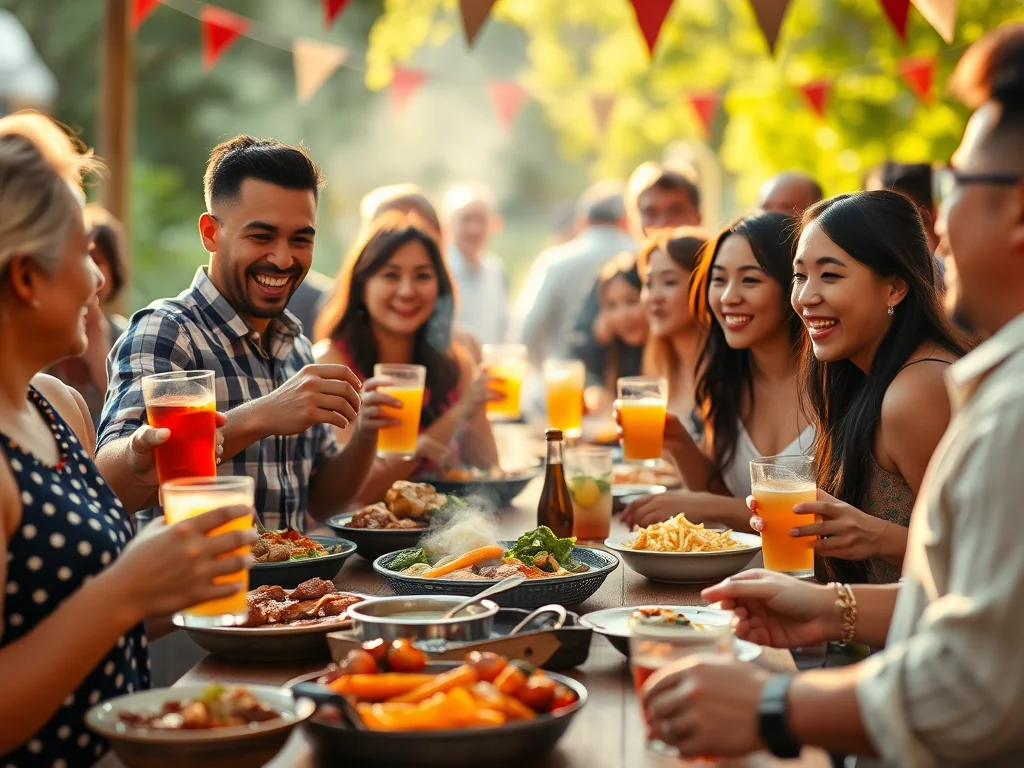Relocating from the Philippines to the United States presents Filipino immigrants with a myriad of cultural differences that can impact their daily lives, social interactions, and integration into American society. This article reviews several key areas where these cultural variances are most pronounced, offering insights to help ease the transition for Filipino newcomers.
Social Interactions and Personal Space
In the Philippines, social bonds are tight-knit, characterized by warmth, physical closeness, and communal gatherings. Filipinos often engage in physical expressions of friendship like hugging or standing close during conversations, reflecting a culture of warmth and intimacy.
Contrastingly, in the United States, there’s a notable emphasis on personal space. Americans generally maintain a larger physical distance during interactions, and casual touching might not be as common, especially with those outside one’s immediate circle. Greetings might involve handshakes in formal settings or a simple wave or nod among acquaintances. Filipino immigrants might initially find this reserve off-putting, interpreting it as unfriendliness, while their own expressiveness might be seen as too forward by some Americans.
Communication Styles
Filipinos tend to communicate in a manner that prioritizes harmony and indirectness, often using humor, subtlety, or even silence to convey disagreement or discomfort. This ‘pakikisama’ or getting along with others is central to Filipino social dynamics, where preserving relationships is key.
In the U.S., communication tends to be more direct and explicit. Americans value straightforwardness, where ‘no’ means no, and feedback is given openly, even if it’s critical. This can be a cultural shock for Filipinos accustomed to nuanced communication, where direct confrontation is avoided to maintain peace. Navigating this difference requires Filipino immigrants to adapt to a communication style that might feel blunt or confrontational but is simply part of American cultural norms.
Time Perception
The concept of ‘Filipino time’, where punctuality is flexible in social contexts, contrasts with the American emphasis on time management. In the U.S., being on time for appointments, meetings, or even social events is seen as a sign of respect and professionalism. Filipinos moving to the States might need to adjust their approach to punctuality, especially in professional settings where schedules are strictly adhered to.
Work Ethic and Professionalism
Filipinos are known for their diligence and ability to juggle multiple responsibilities, often in challenging conditions. However, the American workplace culture might present different expectations:
- Hierarchical vs. Flat Structures: While Filipino workplaces might have a more top-down approach to decision-making, U.S. companies often promote a more egalitarian environment where input from all levels is valued. This can be empowering but also confusing for someone used to a clear hierarchy.
- Work-Life Balance: The U.S. promotes a culture of work-life balance, often with clear boundaries between professional and personal life. This is different from the Filipino context where work might extend into personal time, especially to support family.
- Professionalism: American professionalism might emphasize different aspects like individual initiative, punctuality, and a more formal approach to workplace interactions. Filipinos might need to adjust to being more vocal about their achievements or needs in a work setting where self-advocacy is encouraged.
Family and Community
In the Philippines, family extends beyond the nuclear to encompass a wide network of relatives, with a strong communal lifestyle where everyone contributes to and relies on each other. This contrasts with the U.S., where nuclear families are more common, and individualism is celebrated. Filipino immigrants might feel a sense of loss or isolation due to the less community-oriented environment, prompting them to create or join Filipino community groups to maintain cultural connections.
Food and Dining
Food is a cultural touchstone:
- Dining Etiquette: Filipino communal dining practices, where food is shared from common dishes, differ from the American norm where individual servings are more common, especially in formal settings. Filipinos might need to adapt to this less communal approach to meals.
- Meal Times: The timing and structure of meals can vary, with Americans often having more rigid meal schedules.
- Food Availability: Access to Filipino ingredients might be limited, encouraging immigrants to either adapt recipes or engage in community efforts to source traditional foods.
Religion and Festivals
The predominantly Catholic Philippines has a calendar filled with festivals and religious observances. In the U.S., while religious freedom is a cornerstone, public expressions of faith might be more subdued or private. Filipino immigrants might miss the collective celebration of religious events but can find solace and community in Filipino-American gatherings that maintain these traditions.
Education and Learning
Educational approaches differ:
- Approach to Education: The U.S. educational system encourages critical thinking and participation, differing from potentially more rote-learning-focused Filipino education.
- Parental Involvement: There’s a strong expectation for parental engagement in the U.S. education system, which might not align with Filipino cultural norms where schools are seen as primarily responsible for education.
Healthcare and Social Services
Healthcare in the U.S. can be complex, with a mix of public and private insurance systems, contrasting with the more straightforward, though less accessible, system in the Philippines. Understanding healthcare options, including the importance of health insurance, is crucial for Filipino immigrants. Social services in the U.S. are also available but navigating them requires familiarity with the system, which can be quite different from the informal support networks in the Philippines.
Summary
For Filipino immigrants, adapting to American life involves acknowledging and navigating a spectrum of cultural differences. From personal interactions to professional environments, the journey requires understanding and embracing new norms while holding onto the cultural heritage from the Philippines. This cultural adaptation not only aids in personal growth but also enriches the multicultural fabric of the United States, fostering a blend of Filipino and American identities.

